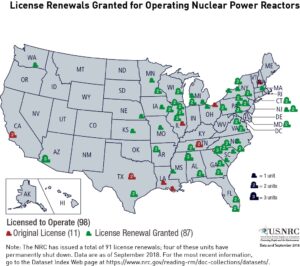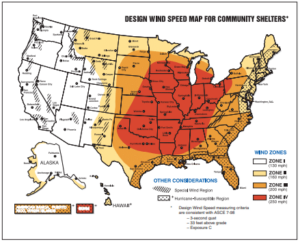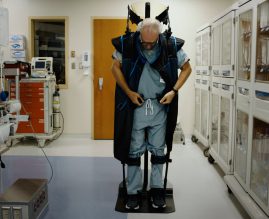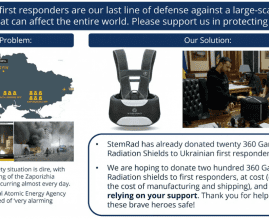Emergency Response at Nuclear Plants – with Effective Radiation Gear
12.31.18 | Monday | Nofit Amir
From harrowing hurricane scenarios to a simple fire ignited by a single spark, the main concern at nuclear plants is to safeguard the cooling systems, which ensure that safe temperatures are maintained around the nuclear reactor core. Ultimately, any damage to the core raises the specter of a meltdown.
To prevent radiological emergencies, the Nuclear Regulatory Commission (NRC) sets protective measures that take into account a wide variety of factors, including the geographic vulnerability of each plant to natural disasters (see hurricane/earthquake probability maps below and a federal map of nuclear power plant locations). Nevertheless, these measures are not infallible, as they rely on past occurrences and estimated probabilities for each area. Paradoxically, the “smaller” incidents – like the start of an internal fire during regular function of a nuclear plant – might possibly be the most challenging to forecast (e.g., the 2017 explosion and fire at the Turkey Point nuclear plant in Florida, which led to the automatic shutdown of one of the reactors).
Selective and effective radiation gear
For nuclear workers, dealing with emergencies may entail receiving very high radiation doses, to ensure the safety of the surrounding civilian population. Onsite first responders, such as the nuclear plant’s fire brigade and the plant’s operators and technicians are the first to rush in to deal with the radiological emergency. If the situation proves difficult to control, offsite units (such as local fire stations) and federal agencies may assist response. The NRC’s emergency response center, which is notified immediately of the accident, coordinates the breadth of response with nuclear plant management and state and local officials.
All of these responders (plant workers, firemen, and agency personnel) can be shielded from the most penetrating form of radiation – gamma radiation – through a new technology, which protects the most vulnerable areas of their bodies. Until recently, wearable protection from gamma radiation was deemed impossible, since protecting the whole body would require radiation gear too heavy to allow worker mobility. Selective shielding technology, developed by StemRad, enables protection of critical areas of the body, particularly stem cells, which support the body’s recovery from exposure to high doses of radiation. StemRad’s radiation shield, the 360 Gamma, has been tested and deployed and has received a far-reaching stamp of approval by the scientific community, including three Nobel laureates and numerous nuclear science experts.
Prof. Richard Champlin, M.D. who led efforts to save the lives of Chernobyl firefighters:
Not only will selective shielding help save nuclear workers’ lives during a radiation emergency, but it also fills a major capability gap, enabling them to better perform their critical missions. Thus, it has the potential to be a critical component in saving countless lives.
Federal Maps:

Licensed nuclear plants according to the NRC website

Hurricane-prone regions of the United States (Source: FEMA)
For more information, contact StemRad.

Writes content for StemRad’s website, social media, and newsletter. She is an advocate with over twenty years of experience of writing high-end content in academic and industrial settings.


